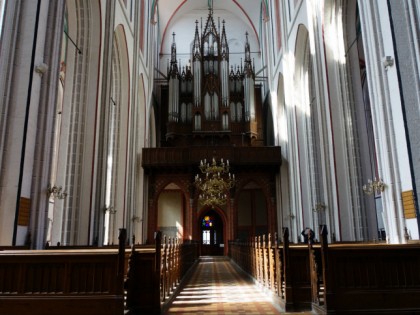Schwerin Cathedral as a Casket with Relics
The Schwerin Cathedral of St. Mary and St. John is about 900 years old. It has been a large pilgrimage church for over 800 years. In 1222, Henry Schwerin gave the church a relic he brought from the Crusades - a drop of Christ's blood, contained in a jewel. In the same century, the temple got a new shrine from King Ludwig the IX - a thorn from the crown of thorns of Jesus, and a century later - a fragment of the cross on which he was crucified. The influx of pilgrims allowed organizing the church’s extension, which ended only in the XV century. Today it is a Lutheran temple and the only medieval church in the city.
Schwerin Cathedral is a three-nave basilica with a Gothic chapel, built by the example of Marienkirche in Lübeck. The length of the main nave is 100 meters, so the temple is considered the largest church of the Hanseatic period in the Baltic region. The tower offers a panorama of the city from a height of 117 meters. The most valuable pieces of furniture of the cathedral are the triumphant cross and the altar of the XV century with figures of the Virgin, Christ and St. John the Evangelist, a bronze baptismal font of the XIV century and the organ of 1871.










































